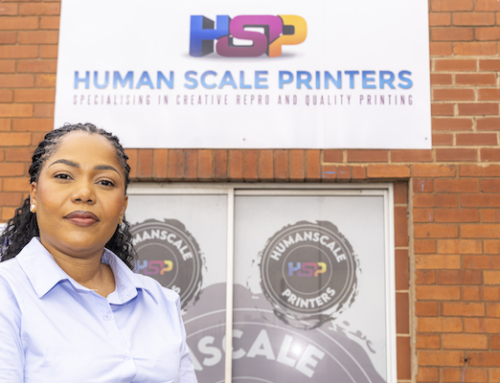Focus Label Machinery outlines the benefits of UV and electron beam (EB) curing, and their respective considerations.
When it comes to curing in the printing industry, UV and EB are two popular methods that offer unique advantages. Understanding the benefits of both UV and EB curing can help you make an informed decision about which method is best suited for your specific needs.
What Is UV Printing?
UV printing is a printing method that uses special UV curing ink to print onto a variety of substrates. The ink is placed on the substrate by the printer before being instantly dried, or cured, by an ultraviolet light. Originally invented to apply nail varnish in a quick and convenient manner, UV printing and curing has become a popular choice in many commercial applications, but especially in narrow web printing and converting.
What Are The Advantages Of UV Curing?
Speed and efficiency: the UV curing process can be completed in seconds, facilitating shorter production times and higher levels of productivity.
Suitable for heat-sensitive substrates: UV curing is a relatively low-temperature process that doesn’t generate significant heat, making it suitable for heat-sensitive materials, especially when chill rolls are used to manage heat.
Environmentally friendly: LED UV curing does not emit Volatile Organic Compounds (VOCs) which are damaging to human health and the environment, so it’s ideal for businesses seeking sustainable printing.
Compact and convenient: UV curing technology can be easily integrated into most modern flexo, digital and hybrid presses to provide more efficient ink drying methods than older infrared or hot air drying equipment.
Recent advancements in LED UV technology have further reduced operating temperatures, emissions, and concerns regarding ink migration in food packaging, enhancing the wider appeal of UV printing.
However, UV curing does have limitations. UV light has limited penetration and may not be suitable for curing thick coatings. Additionally, some absorbent substrates may not be compatible with UV curing, especially in some food prime packaging applications.
What Is EB Curing?
This process uses high-energy electron beams to instantly cure or harden coatings, inks, and adhesives. The electrons penetrate the material, creating a chemical reaction that results in rapid curing without the need for heat or solvents.
EB curing has earned significant interest in the printing industry in recent years due to its unique capabilities such as:
Deep penetration: unlike UV curing, EB curing offers deep penetration so it can cure a wider range of materials, which is particularly useful for specialised food packaging.
Consumer safety: EB inks are regarded as safer for food packaging applications, reducing the risk to consumers and safeguarding food products against spoilage.
Typical applications: special coating and printing in wide web formats, and it can be found in flooring.
However, it’s important to note that EB curing requires significant power and can be hazardous, so robust proper protective equipment and training is necessary to protect workers. Also, EB curing equipment is much larger and more expensive than UV systems and cannot be easily integrated into conventional printing equipment. Most applications require a special EB module.
FOCUS LABEL MACHINERY
https://www.focuslabel.com





